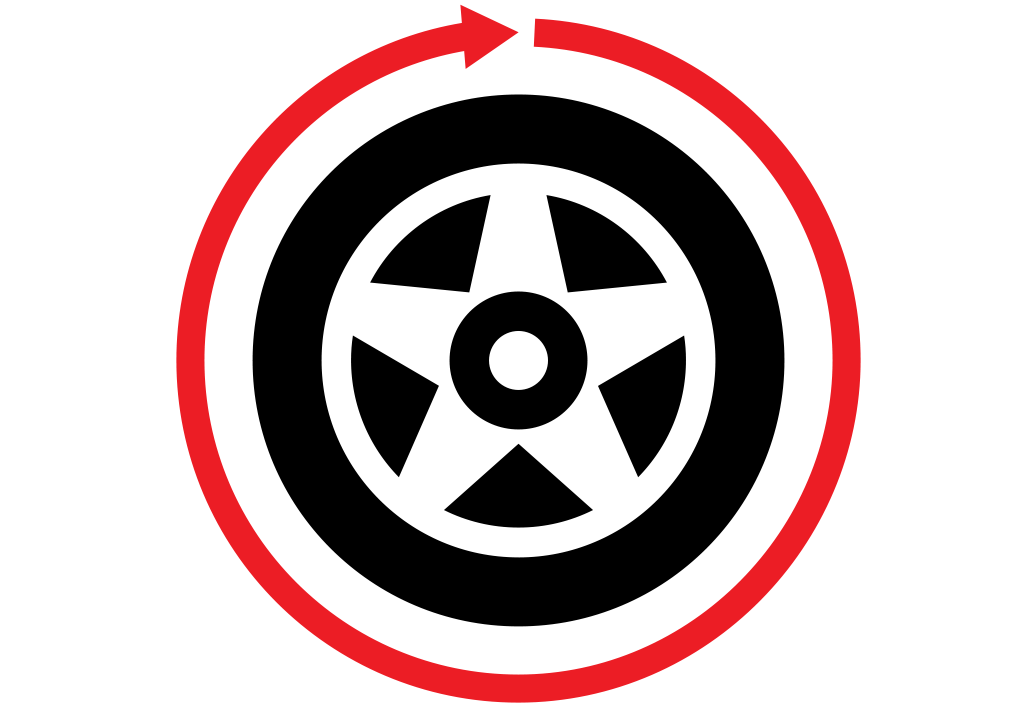The rolling circumference is the exact distance your tyres will travel in one revolution – and therefore a critical parameter for working out the tyre dimensions. All the more important, then, for you to be able to calculate the tyre size!
Calculating the tyre size: For new tyre sizes, this is essential
Swapping tyres isn't a problem for most drivers. At least, not if the old and new tyre sizes are the same. However, that is not always the case. Why? The reasons can vary enormously and relate mostly to the driver. For example, you want a larger tyre size to stand out on the roads. However, the reason is often much more mundane. For example, when you buy a new car and wonder if it can use your old tyres. Whatever it is you have in mind, these examples all have one thing in common: a new tyre size also means that the rolling circumference changes. Unintended consequences cannot be ruled out. The reason is that if the rolling circumference differs too much from the standard tyres, it can lead to problems at MOT inspections. So, what is permitted?
This question cannot be answered the same way for everyone. Ultimately, tyre sizes differ from car to car. To find out the tyre size for your car, often all you have to do is look at the sidewall of your tyres. This information is also provided on the inside of the driver’s door. If not, it will be entered by the technical inspector in your car documents. However, these details do not tell you the actual tyre size of your car tyres. However, you can also work it out using this formula.
Calculate the tyre size using a formula

Even without a tyre calculator, it is still possible to calculate the tyre size. For this, all you need is the tyre labelling and the following formula:
C = π x (R + 2 x (H/W)/100 x W)
The tyre circumference is derived from the wheel rim size (R) in inches and the ratio of the height (H) and width (W). For this reason, the wheel rim size (R) is also multiplied by 25.4 to obtain the wheel rim size in millimetres. For example, the circumference for a tyre with the 245/45 R 18 label works out as follows:
C = π x (18 x 25.4 mm + 2 x (45/100) x 245 mm) = 2,129 mm = 212.9 cm = 2.129 m
Calculating the tyre size: The final step
Now you have to calculate the percentage difference in the rolling circumference of your old and new tyres. A change may not exceed 1.5 to 2.5 percent. These parameters set the tolerance for rolling circumference. The reason is that an excessive difference in the values can lead to complications in integrated systems, such as the ABS or ESP. This is especially true for deviations between the front and rear wheels. That is a substantial impairment that the inspector will not accept. A word of caution: The calculated values serve only as a guide. What tyre circumference is actually allowed is decided solely by your technical inspector.

Rolling circumference affects the speedometer
A difference in the tyre size will also change the rolling circumference. But did you know that it will also affect the speedometer? The speedometer works out the speed of a car through the wheel revolutions. So, if you switch to larger tyres, the speed displayed on your speedometer will be less than the actual speed at which you are travelling. Smaller tyres, on the other hand, result is a higher speed on the speedometer. The display may show 10 per cent +4 km/h more than the actual speed of the vehicle, and not one km/h more. If the difference is too great, the speedometer will have to be adjusted.
Check the rolling circumference of the tyres you have now and then for the tyres you want with the help of our formula. Are you still looking for the tyres you want? Discover a wide selection at Uniroyal.
Related Topics
-
 2023/03/31To the untrained eye, the side wall of a tyre can look like a meaningless set of numbers, letters and symbols.What does tyre size mean?Read more
2023/03/31To the untrained eye, the side wall of a tyre can look like a meaningless set of numbers, letters and symbols.What does tyre size mean?Read more -
 2023/03/31What are the advantages of using winter tyres and do I really need them? Find all answers around the usage and legislation of winter tyres.Should I buy winter tyres?Read more
2023/03/31What are the advantages of using winter tyres and do I really need them? Find all answers around the usage and legislation of winter tyres.Should I buy winter tyres?Read more